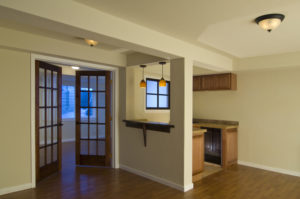 If you’re finishing your basement with the goal of hanging out there in a recreation room, man cave, kids’ room, or office, it will need cooling and heating. It’s mostly warm in Yuma, necessitating air conditioning, but in winter — and especially below ground level — you’ll need a source for heating. Let’s have a look at how to heat and cool a finished basement.
If you’re finishing your basement with the goal of hanging out there in a recreation room, man cave, kids’ room, or office, it will need cooling and heating. It’s mostly warm in Yuma, necessitating air conditioning, but in winter — and especially below ground level — you’ll need a source for heating. Let’s have a look at how to heat and cool a finished basement.
Insulating Your Finished Basement
Before you install cooling or heating equipment, insulate your finished basement to prevent mold and mildew. Concrete soaks up moisture, and though it may tend to be dry where your basement is, moisture can still seep into the concrete walls. Thus, it’s best to avoid fiberglass insulation. A better choice is insulation sprayed directly onto the concrete walls.
A cheaper and easier solution is joint-sealed foam board. Properly installed, foam board can create a vapor barrier that will help prevent mold and mildew.
Types of Heating/Cooling for the Basement
- Fireplace. If there’s an existing chimney in your basement, a fireplace might be the right heating solution. They are relatively easy to install, but with a wood-burning or a natural gas fireplace, you’ll need to maintain it to prevent carbon monoxide buildup and to prevent a fire hazard. An infrared fireplace might be a better way to go.
- Ductless Mini-Split. Ductless mini-splits may be the most expensive solution, but it’s probably the best one. This system, which can heat and cool, works like a heat pump, with an indoor air handler connected to an outdoor condenser, pulling in air to heat or cool it.
- Baseboard Heater. Baseboard heaters are easy to install and run on electricity.
- Radiant Heating. This is a relatively affordable option which involves installing panels in flooring or walls. You can go with hydronic, radiant-floor heating (water based) or electric radiant-floor heating, which is an energy-based system installed beneath the flooring.
- Add registers to the existing HVAC system. If you have ductwork in place, you can extend registers into the basement.
For more on heating and cooling a finished basement, contact Hansberger Refrigeration and Electric Company.

